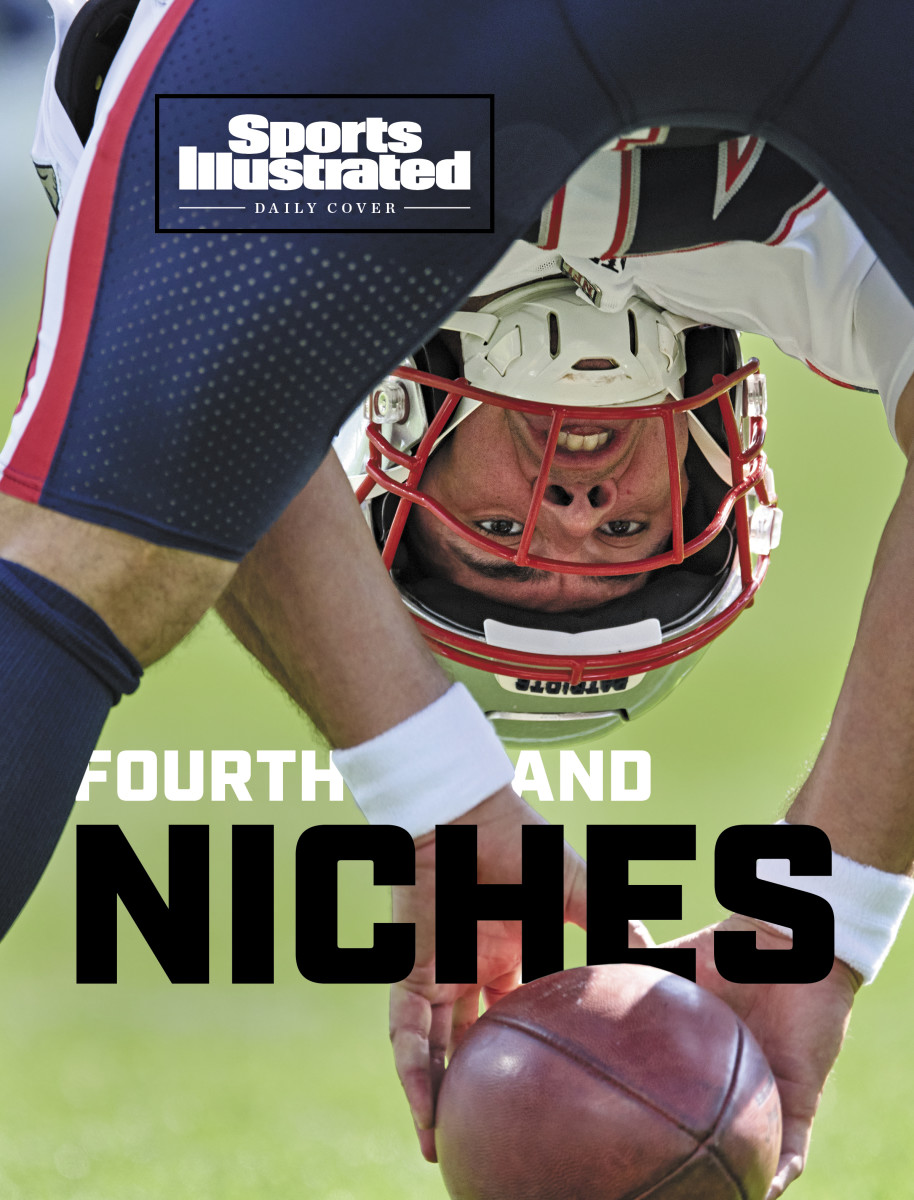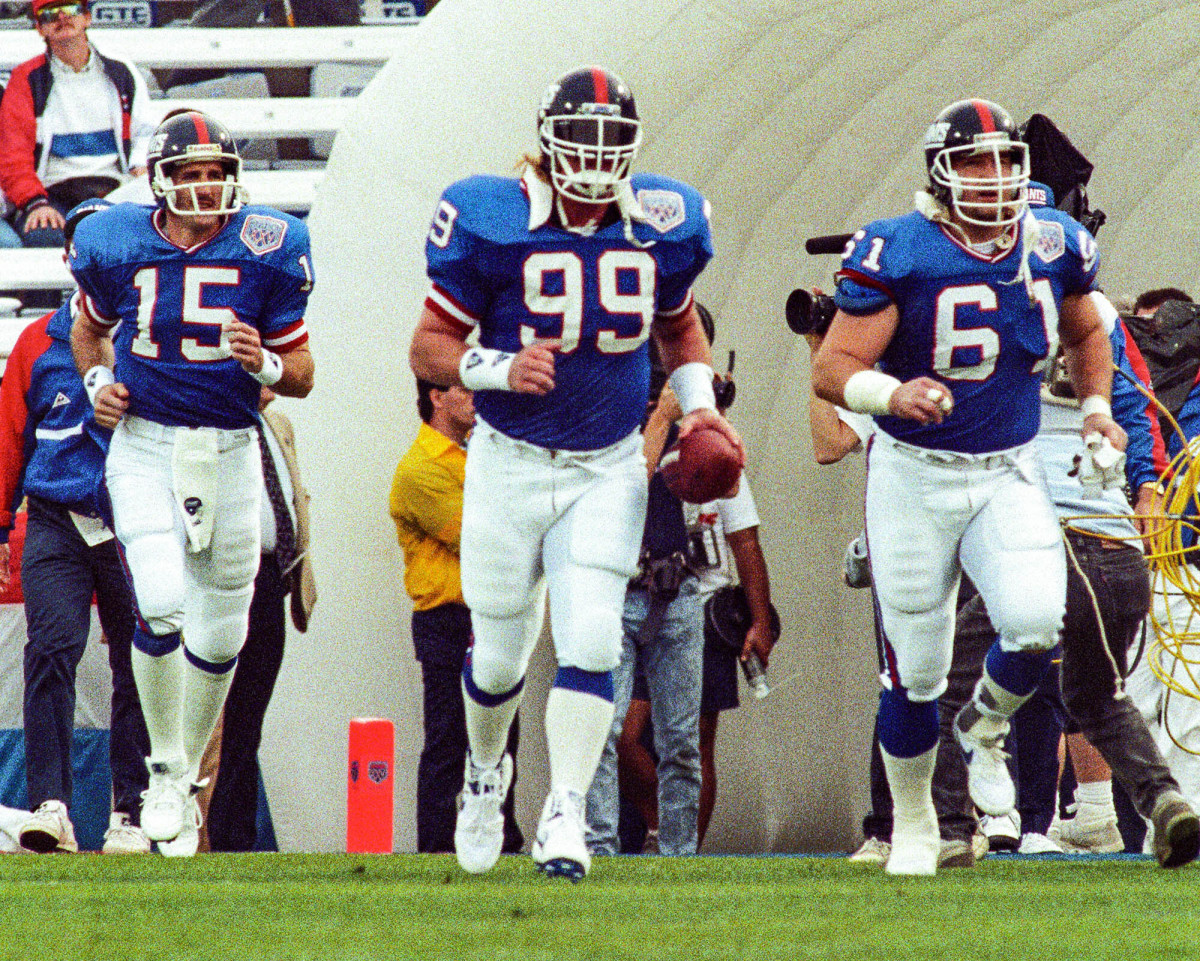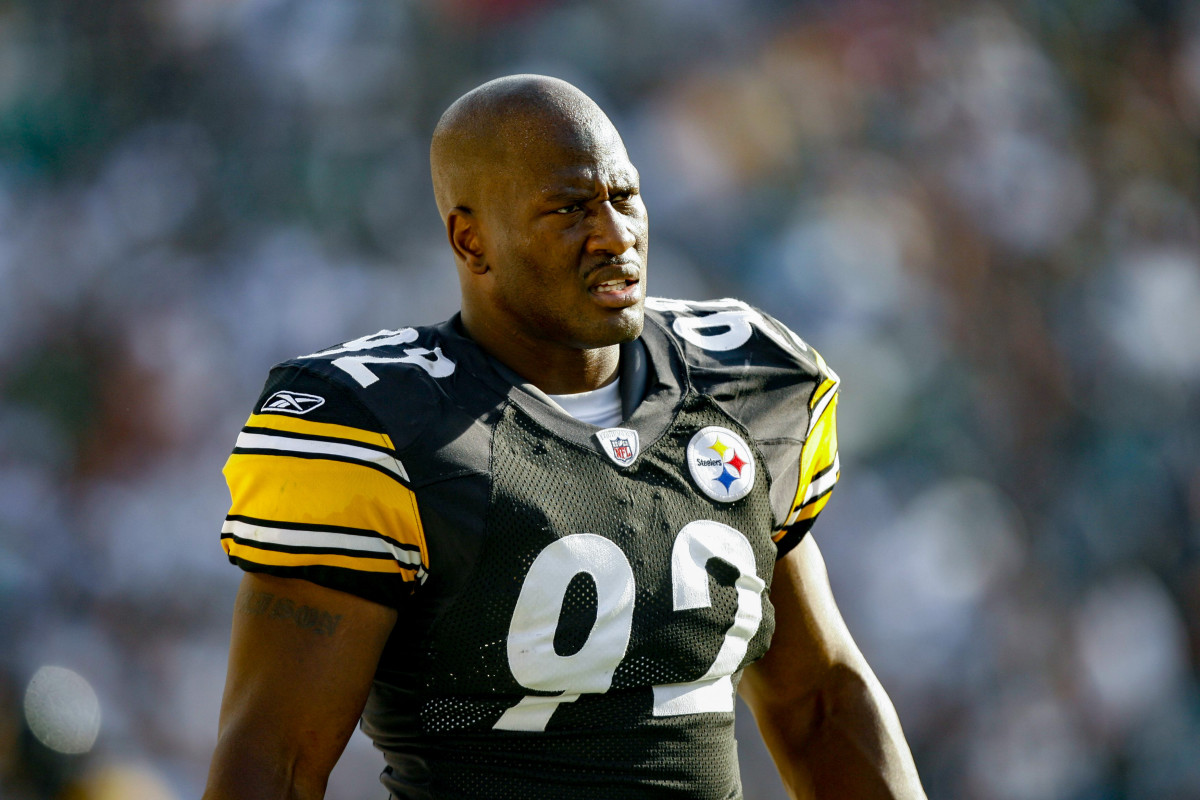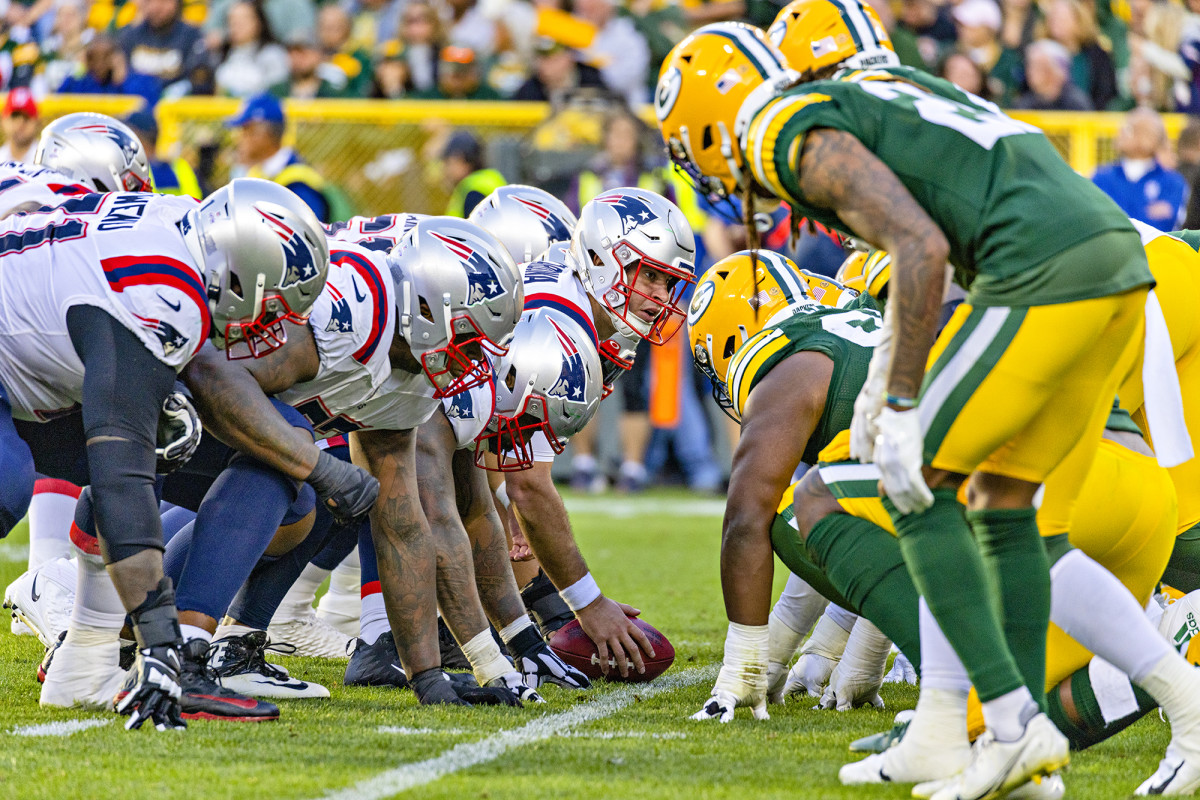The Upside-Down World of Long Snappers

Early in the fourth quarter of their season opener, the Bengals found themselves confronted by a distinct football catastrophe. The play that caused it was fairly unremarkable, so much so that the CBS broadcast didn’t note the impact until about an hour later. But the consequences would cost Cincinnati dearly, shaping the early course of its AFC title defense.
The nightmare began to unfold as Bengals punter Kevin Huber kicked away to Pittsburgh’s Gunner Olszewski, who shrugged aside the flailing tackle attempt of Clark Harris and bounced outside. Olszewski’s return covered 20 yards while Harris, Cincinnati’s starting long snapper since 2009, writhed on the turf with what was later revealed to be a torn right biceps. After a frantic comeback, the Bengals stood an extra point away from victory when backup tight end Mitchell Wilcox stepped in as Harris’s emergency fill-in. The first snap of his NFL career was noticeably slow, giving a Steelers rusher time to get his fingers on the kick. Wilcox got another chance in overtime, but this time his hike flew high; Huber was unable to turn the laces, and the ultra-reliable Evan McPherson’s 29-yard field goal attempt knuckled far wide left. The Steelers later won on a last-second kick of their own.
For fellow snappers around the league, such as the Patriots’ eighth-year veteran Joe Cardona, Harris’s injury brought up mixed emotions. It stunk to see a member of their 32-man community sidelined, especially someone Cardona calls “one of the best in the league, hands-down.” Yet Cardona couldn’t help but feel a bit of satisfaction at how things turned out, too. “We’re in a moment where we’re seeing the value and importance of the position,” Cardona says. “I think what happened in Cincinnati would be the best example of that. When you walk out there on Sundays, and teams are dressing 46 guys, you’re the only one who can do this highly specialized job at the NFL level.”

In addition to serving as the folded-over starting post for New England’s punts, field goals and PAT attempts, Cardona has long fought to bring snappers more shine. Significant gains were made in 2020, when he and others made enough noise behind the scenes to secure inclusion of a long-snapper spot in Pro Bowl balloting and All-Pro voting for the first time. But clearly, work remains: The Madden franchise doesn’t even give long snapping its own separate position category. “It’s pretty insulting,” says Cardona, who is listed as a tight end in Madden 23—at a paltry 25-overall rating, no less. (Then again, he adds, “I don’t play their game, but I do get a nice licensing check. So who’s really winning there?”)
An argument can be made that every long snapper in the league has already won; on average they get paid to deliver snaps for eight kicks per game and then kick back for the rest. “People always said I had the best job in football,” says former Bears snapper Patrick Mannelly, “and I honestly can’t argue against that.” Historically, however, they have been dismissed as mere oddities, worthy of little mention beyond the occasional off-day column or local TV segment. (One notable example of the latter, from the early 2000s, featured Mannelly flinging footballs across traffic on Lake Shore Drive.) “As esoteric as yodeling,” the Atlanta Journal-Constitution once wrote, “and rarely noticed unless something goes awry.”
Spiral down the rabbit hole of the most specialized role in professional sports, though, and surprising depth is revealed, from a booming cottage industry of snapping-specific coaches cranking out rankings of kids as young as middle school, to bubbling calls for solidarity in pursuit of higher salaries at the NFL level. “It’s a niche, for sure,” Cardona says. “But if we’re not fighting to be recognized as a position, what’s the point?” Even the monotonous, solitary nature of the act of snapping itself belies the true complexity (and pressure!) of their overall duties. “It’s combining a quarterback’s degree of accuracy with the strength of a linebacker and the technique of an offensive lineman,” Cardona says.
Or as then Eagles snapper Pat Beach put it to the Philadelphia Daily News three decades earlier, in October 1992, “It looks easy, but believe me, this is definitely not a snap.”
It is impossible to separate long snappers from football, if only because every legal instance of a foot striking a ball in the sport (aside from on kickoffs and free kicks) starts with a long snap. “Think about a famous kick,” says agent Kevin Gold, whose career client list features more than two dozen NFL snappers. “The ball didn’t just appear there.” And yet they were cast as anonymous extras from the outset: In Hall of Fame coach Walter Camp’s 1911 instructional tome, Football for the Spectator, amid a broader passage about punting, the snapper is described as, simply, “the one who puts the ball in play”.
Decades passed before the position earned the dignity of distinct terminology; up through the 1970s, the only place to find “long snapper” in a newspaper’s sports section was in a fishing tournament recap (the same goes for the previously interchangeable term “deep snapper”). Their role was simply an extra chore given to a backup tight end, linebacker or lineman with a suitable spiral, meaningful enough to practice every so often yet wholly unworthy of occupying a whole roster spot. “[C]enters are pretty low on the totem pole in recognition and the long snapper is a notch lower,” the Salt Lake Tribune observed in ’83. “It really must be a thankless task, this long snapping business.”

Still, there have always been a few fanatics who appreciate snappers as more than just the ones who put the ball in play, such as when Patriots coach Bill Belichick memorably preached about the position for 10 uninterrupted minutes during a media availability last season—and seemed to actually enjoy himself in the process. A second-generation coaching descendent of George Allen (who is credited with rostering the first dedicated long snapper, Washington’s George Burman in 1971), Belichick opened his filibuster by tracing modern snapping to another figure. “The key guy,” Belichick said, “was DeOssie.”
Steve DeOssie never predicted that he would shape long-snapping history when the Cowboys drafted him as a combo linebacker-snapper in 1984. “I got tricked my rookie year,” he says. “They asked if I could snap for the punt and have blocking assignments. I assumed that’s what they did in the NFL, so I said sure. Then within two days I realized that it wasn’t the norm. It wasn’t just snap, move right or left, and get a gap. They were giving the snapper actual man-on-man responsibility.”
The result was a revolutionary spread punt coverage scheme that dispatched two gunners out wide, trusting in the nearly 250-pound DeOssie’s blocking acumen to handle rushers solo. “Maybe I leg-whipped [Washington cornerback] Darrell Green one time to stop him from crossing me up, but other than that I was pretty good,” he recalls. “There was nothing they could show us that would make us bring the gunners in. That was the biggest advantage.”

Whereas the physical nature of blocking came naturally to DeOssie thanks to his linebacking background—he continued to double up on defense for the rest of his career—the added burden also forced him to tweak his snapping mechanics. “Every day, when practice was over, I’d take at least 50, sometimes 100 snaps,” DeOssie says. “Before, it was straightforward: It was just something you did to help out the team, and it didn’t matter what you did after you snapped. Now you had to change the stance and technique to deliver the ball fast enough [and then block]. Couldn’t get away with a forward lean. Had to get the same velocity. It went from an afterthought to something I had to think a lot about.”
Soon the whole league had undergone a similar mindset shift: By 1997, two years after the last of DeOssie’s 12 transformative NFL seasons, more than half of clubs were regularly designating a long snapper on their weekly special-teams depth charts. “Everybody thinks they can do it, because they think that all you gotta do is bend over and get the ball back to the holder,” Gold says.
“But there’s a hell of a lot more involved, as James Harrison will tell you.”
“You mean my one snap in my career, ever in my life? S---, I thought it was great till I looked back and realized it was out the back of the end zone.”
Fourteen years later, the memory is fresh in James Harrison’s mind. Then a dominating outside linebacker for the Steelers who captured Defensive Player of the Year honors in 2008, Harrison was standing on the sidelines during a game against the Giants that October when long snapper Greg Warren tore his right ACL and the call went out for a replacement. “Come to find out, [linebacker] James Farrior had actually snapped in a game [at a lower level],” Harrison says. “He was just quiet as a church mouse till I snapped it a sky mile over this motherf-----’s head.”
The motherf----- in question here was punter Mitch Berger, who never had a chance to snag Harrison’s missile as it sailed over his head and through the end zone, resulting in a pivotal safety in a Steelers loss. And though Harrison more than atoned three months later with his 100-yard interception return in a Super Bowl XLIII triumph over the Cardinals, his gaffe remains the quintessential example of the position’s unexpected nuance. As he explains, “I gave it that extra oomph. I ain’t take into account the adrenaline.”

Rising heart rates and roaring crowds aren’t the only potential disruptions that snappers face. “Some [opponents] will try to throw you off by saying, ‘He’s moving the ball,’ just to get you to think, ‘Oh gosh, maybe I am,’” the Vikings’ Andrew DePaola says. Bad weather is another. “Cold environments, hand warmers are definitely a must-have,” the Chargers’ Josh Harris says. “You’ll get popup showers here and there, so I’ll do wet ball drills [during practice], squirting water on it before I snap.”
Look at the men who look at football upside down and you will find a range of grips, stances and deliveries; like a golfer’s swing, or a pitcher’s motion, no two snappers execute the same way. “Some guys look at the punter, and some guys are straight down at the ball, or at the defense,” Josh Harris says. “It’s different for everybody.” But the demand for perfection in what happens next is universal. “For field goals, the ideal is two and a half rotations [of the football], and anything under 1.3 [seconds] from snap to kick is considered good,” DePaola says. “For punts, I don’t worry about rotations, because you’ve got more time and it’s harder to manipulate at 15 yards versus eight. I just try to put it at his belt buckle, where he can catch it and kick it in two seconds or less.”
Put together, the pressure to repeat a single outcome over and over can be too much for some to handle. “I’ve seen guys get the yips,” DeOssie says. “There’s no coming back from that. If you screw up two or three in a game, you’re out of a job.” And that is without mentioning the work beyond snapping, like warding off 300-pound opponents—no small undertaking for a generation of snappers unfamiliar with NFL-style protections. (Shield formations, which put less protection responsibility on snappers, are far more prevalent in college.) “That’s the biggest learning curve,” the Seahawks’ Carson Tinker says. “The snapper doesn’t have to block in college.”
Every so often, the snapper is even called upon for more prestigious work. “Making a tackle is fantastic,” says the Panthers’ J.J. Jansen, who has recorded 20 (nine solo) in his 14-year career. “I had a teammate say, ‘Just run fast and get down there; they don’t know you’re the long snapper.’ I’ve taken that to heart.” But those moments pale in frequency to the ample free time that they enjoy; one can only snap so many balls, watch so much film, and lift so many weights in a given work day. “I’ve described the life as 5% white-knuckle time and 95% relaxed and chill,” Jansen says. “One of the tricks of the trade is being able to know how to turn it on and off, because a lot of it is [spent] waiting around.”
Everyone fills the hours with different pastimes. “We don’t have ping-pong or pool [at the Vikings’ facility], but we’ll throw darts, or try to get a basketball into a laundry bin,” DePaola says. Down in Charlotte, by contrast, Jansen prefers a more academic approach. “I’m really into the analytics and the mathematics, so I try to dig into that on my own,” he says. “It doesn’t really apply to my job—coach says punt, we go punt. I enjoy for my own interest, studying where the odds say things should go.”

In college at Pittsburgh, coaches encouraged Cal Adomitis to stay busy by joining in on blocking drills, tackling circuits, “everything other than live scrimmage periods. It’s a little different at the pro level,” says Adomitis, who signed with Cincinnati as an undrafted free agent, was the lone long snapper to make a practice squad and was activated to replace the injured Harris in Week 2. “They’re not as gung ho about me jumping in.”
Long snappers have earned at least some street cred, a far cry from the widespread skepticism of several decades ago. For instance, when a 1988 NFL draft preview published in USA Today dared to list “long snapper” as one of Washington’s key needs, an un-bylined brief in the Los Angeles Times scoffed, “What next, summer long-snapper camps?”
Chris Rubio is talking about farts. Specifically, the acoustic differences between mouse farts and elephant farts. Pachyderms, you see, tend to pass gas low and slow, sounding more like a rumble than a rip. Mice toots, however, come out fast and squeaky, like the small puff of air that helps eye doctors diagnose glaucoma—or, Rubio explains, the ideal long snap.
Sporting a shaved head, salted goatee and yellow hoodie bearing the name of his business, the 47-year-old founder of Rubio Long Snapping is standing inside his home garage, a cavernous space of 15-foot ceilings, green turf floor and a sign on the door announcing it as “The Factory.” Footballs and dumbbells are lined up below a tall mirror. Framed movie posters (Happy Gilmore, Swingers) and banners bearing motivational phrases (“LIONS NOT SHEEP”; “BELIEVE”) hang from the plywood walls. There is also a small picture of the local town’s gateway sign, digitally edited by one of Rubio’s friends so that it now proclaims to visitors: WELCOME TO HISTORIC LEWISTON IDAHO THE LONG SNAPPING CAPITAL OF THE WORLD.
Tucked away some five hours east of Seattle, this city of fewer than 35,000 residents is an unlikely place to find an even unlikelier guru of the position. A walk-on at UCLA in the late 1990s, the Southern California native took a job teaching sixth-grade history after college. That’s when he made the bold pivot to the then-untapped space of private long-snapper training. “Started with one lesson a month,” Rubio says, “and then it boomed.” Now he doesn’t bat an eye when a fourth grader enrolls in one of his nearly two dozen annual camps around the country.

His success is on display at his garage turned training center, in the form of about a hundred hanging pennants from some of the NCAA teams for whom his clients have played, from LSU and Oregon to Division III Rose-Hulman Institute of Technology (the Fightin’ Engineers!) in Terre Haute, Ind. And those are just the ones that people send him: In less than two decades on the job, Rubio has coached more than 1,000 college-bound snappers, including eight of the 32 who started this season on active NFL rosters. “I [initially] thought, ‘Who the hell would pay for this?’ ” Rubio says. Today he charges $365 a head for camps and $250 an hour for one-on-one lessons (not counting lodging in, and transportation to and from, north-central Idaho).
Earlier this year, an episode of the Freakonomics podcast summarized the evolution of long snappers as “a classic example of specialization in the labor market.” Among the key reasons for this shift are the growing appetite of college coaches to award long-snapper scholarships and safety-minded rule changes—since 2010, an NFL defender’s entire body must be lined up outside of the snapper’s shoulder pads—that made the position more palatable to parents. (Three members of Rubio’s high school class of ’19, all of whom started with him at age 9, received full D-I rides.) But even though Rubio Long Snapping is far from the only such operation—most notable is a series of specialist camps run by former Iowa State kicker Jamie Kohl—it is hard to argue that any other individual is more influential. “This may sound stupid, but I was the moon,” Rubio says. “I feel I pushed that wave.”
Rubio is seen as a champion of the craft in other ways, collaborating in 2019 with Gold and Mannelly to establish the now-annual Patrick Mannelly Award for college football’s best long snapper. (Last season’s winner: Adomitis.) But there are also those critical of the industry Rubio represents, and to whom it caters. “I think step one is removing barriers to entry for the position,” says Cardona, the NFL’s only Latino long snapper. “My experience with long snapping was learning it on my own, just me and my dad working at it. But there were certainly gatekeepers that ranked players nationally that I had to appease. Unfortunately those came with monetary costs that were tough for my family to afford.”
Rubio doesn’t dispute that he has influence over head coaches, at one point launching into a story about a time that he “got on basically a conference call” with coaches from Georgia Southern to vouch for Ryan Langan, then a relatively unknown recruit from small-town Nebraska who “had never snapped in front of, like, more than 11 people and two goats . . . and sure as hell he ended up getting a full scholarship.” But, when asked whether he thinks the specialization of long snapping has shut out those with less access to resources, he says, “I would say no. And if anyone ever contacts me, like, ‘Maybe we just can’t afford it’? O.K., I’ll work on a plan. I have no problem with that, as long as you’re dedicated.”
As is, the position’s lack of diversity stands out; there has never been a Black NFL long snapper in the era of specialization, and there are typically just a handful at the college ranks each season. J.J. Davis, who is Black, was the long snapper for North Carolina A&T from 2017–21. He recalls feeling “a little uncomfortable” when he started attending Rubio’s camps as a high school junior in Chicago because of how he stood out. Later he was “surprised” to learn that some fellow HBCU schools fielded white snappers. “Even the [HBCU Legacy Bowl] all-star game I played in [last February], the other guy was white,” Davis says.
From Davis’s vantage point, the “big problem in the specialist community” is a “pay-to-play system” that rewards those with means by providing both valuable technical instruction and critical exposure via showcases and rankings. “The more you attend, the more you’re going to get noticed,” Davis says. “Not everyone is fortunate enough to have that opportunity.” But whereas some quirks of the job proved difficult to overcome—most memorably, an opponent whose attempted pre-snap intimidation involved pulling out a wad of dipping tobacco from his lip and throwing it onto the football—Davis never once questioned whether he belonged on the same path as the pros he’d study on YouTube.
“The cool part of long snapping is that everyone’s so nice and welcoming,” says Davis, who now lives and works in Miami Beach. “It felt communal. We’re not superstars out there. Most long snappers are really weird people—weird as in, not too many long snappers are dating the beautiful girls in high school. It’s more the guys that wanted to make the team but didn’t have the skills. You have to swallow your pride and admit that you’re not the most athletic person on the field.
“But you can be perfect.”

As a free agent during training camp this year, Tinker kept in shape at his home outside Austin by snapping at a track hurdle set to the rough height of an NFL punter’s waist and asking his 4-year-old son’s friends’ parents to act as a makeshift scout team. “I coached them up on how to rush a punt,” he says. But he wasn’t out for long, joining the Seahawks the week before their opener after longtime starter Tyler Ott suffered a season-ending dislocated shoulder during practice. “I’ve been a mercenary,” says Tinker, 32, now on his fifth team since 2020. “So it was really easy to snap back into that rhythm.”
The winding nature of his career—last season, Tinker snapped for the Bucs and Raiders in addition to winning a Super Bowl ring as part of the Rams’ practice squad—reflects another downside to the boom. “There’s just no turnover,” Ott says. “There’s always eight guys on the street ready to step in . . . [because] once you become stable, you can play for so long that it [becomes] hard to make it in as a new guy.”
The lengthy tenures that some NFL snappers enjoy—Jansen holds the current title at 14 years, after the Lions’ Don Muhlbach (17) and the Cowboys’ L.P. Ladouceur (16) both played their last games in 2020—have also produced an undesirable effect on wages, as the modest potential monetary gains of free agency often pale in comparison to the appeal of stability. “Most guys, they’ve got a good thing going,” Jansen says. A significant stride was made over the spring when Josh Harris, coming off an All-Pro season with the Falcons, inked a four-year deal with the Chargers worth a record $1.9 million guaranteed. His deal’s average annual value ($1.4 million) is higher than anyone at the position (21 long snappers are scheduled to earn more than $1 million in ’22). But, as several snappers interviewed for this story noted, whereas the highest earners at their position accounted for about 1% of the league’s $120.6 million salary cap in 2012, that figure had dropped to 0.66% entering the 2022 season.
“Partially it’s our fault,” Cardona says. “I think a lot of guys have taken the mindset that if they’re not doing this, they’d be just another person selling insurance, or working an entry-level job. And they see it as a privilege to play in the NFL and to make the minimum. But when it comes down to it, I certainly don’t think the value of the position is encapsulated in the contracts we’ve taken.”
As two of four snappers currently serving as team representatives in the sprawling 2,500-member NFL players’ association—the Jets’ Thomas Hennessy and the Browns’ Charley Hughlett are the others, along with a handful of first, second and third alternates—Cardona and Ott talk often about what it would take to change the position’s financial landscape. “Hopefully there’s a group of us coming up on being free agents that can—resetting the market isn’t necessarily the goal, but also in the grand scheme of the salary cap, a snapper getting $1.75 million is nothing compared to the deal DK Metcalf just signed [in July],” Ott says. “Would my $800,000 signing bonus go noticed on the books next to his $30 million?”

If NFL snappers do end up banding together to flex their collective muscle, it wouldn’t be the first time: In 2019, the season before fans were first allowed to cast Pro Bowl ballots for them, Cardona and others successfully lobbied the league’s competition committee to let them vote for their representatives to that year’s game themselves. “It’s hard to complain,” says Ott, who has been in Seattle since ’16. “We get eight to 10 snaps a game. And kickers and punters make more money because their skill sets are much harder [to master]. But they can’t do their jobs without a good snapper.”
So much has changed about what that Freakonomics podcast dubbed “the most monotonous job in the world.” (One more example: Jansen recalls his rookie contract containing a weight minimum clause, “because back in those days you lined up over the center and could beat them up pretty good. I was one of the smallest snappers then. Now I’m one of the biggest.”) But as long as men have been putting footballs in play, they have also held the belief that what they are doing truly matters, dissenters be damned.
It’s why Tinker cherishes pregame warmups, chatting up fellow snappers, swapping stories about what it is like to see the world upside down. It’s why Mannelly pays it forward, coaching up snappers moving from college to the pros at parks near his Chicago home. It’s why DeOssie’s son Zak took up the family business, reaching two Pro Bowls and winning two Super Bowls as the Giants’ snapper, and why a highly specialized form of NFL history was made in Sept. 2020 when the Bills’ Reid Ferguson and the Dolphins’ Blake Ferguson faced off in the league’s first-ever matchup of long-snapping siblings.
And it’s why, a few weeks before his injury, after practice on a sunny August day, Ott watched with a smile as his 2-year-old son, Liam, waddled onto the field at the Seahawks’ training complex, grabbed a football off the turf and, totally unprompted, folded himself over and flung the ball between his legs.
More Stories on Special Teams:
• The Incredible Tale of the Super Bowl-Winning Snap That Almost Wasn’t
• Why the Patriots Long Preferred Left-Footed Punters
• Bill Belichick and Special Teams: A Love Story
• Justin Tucker Will Rock You
